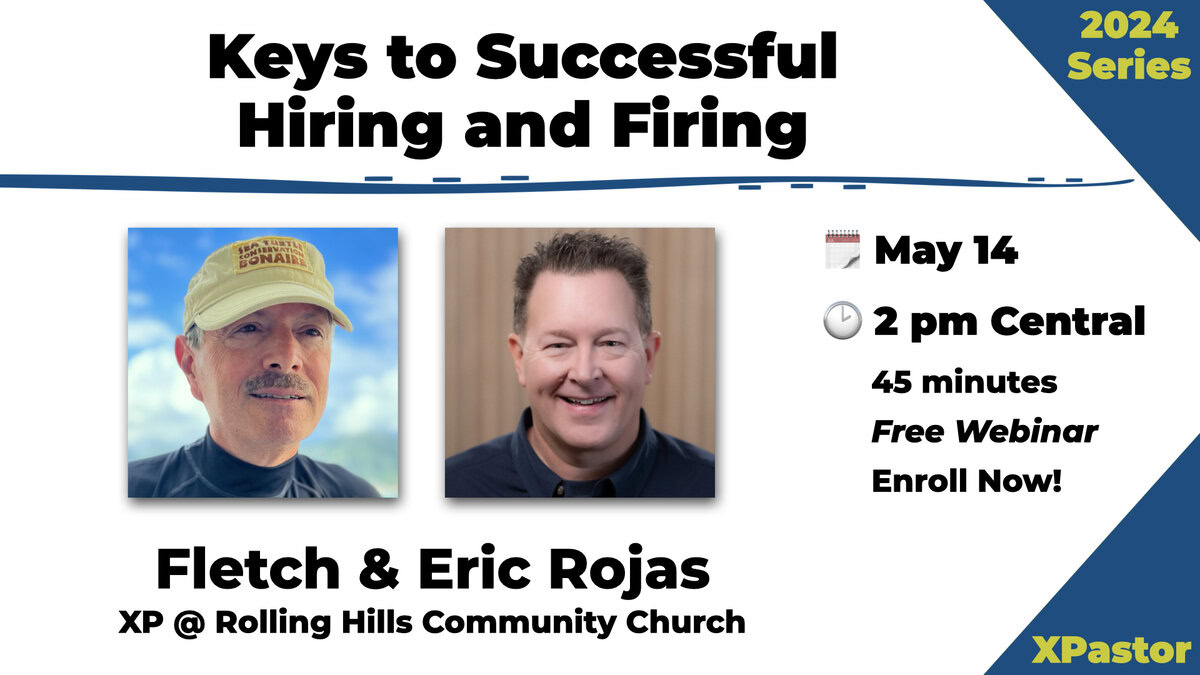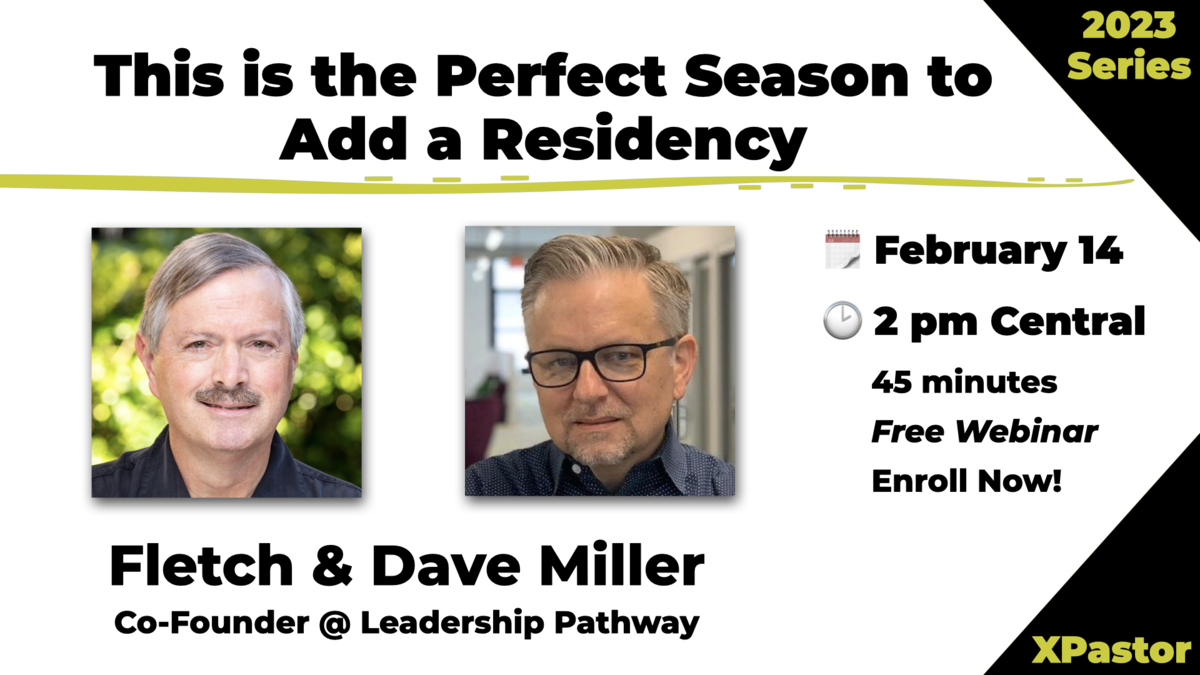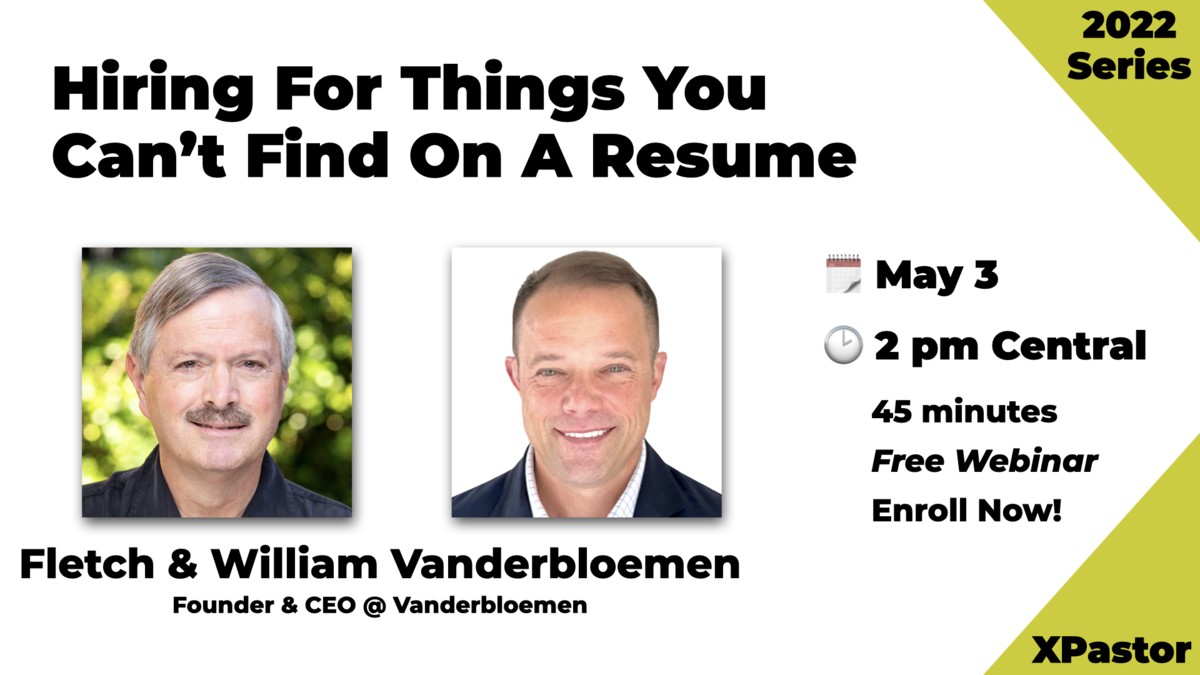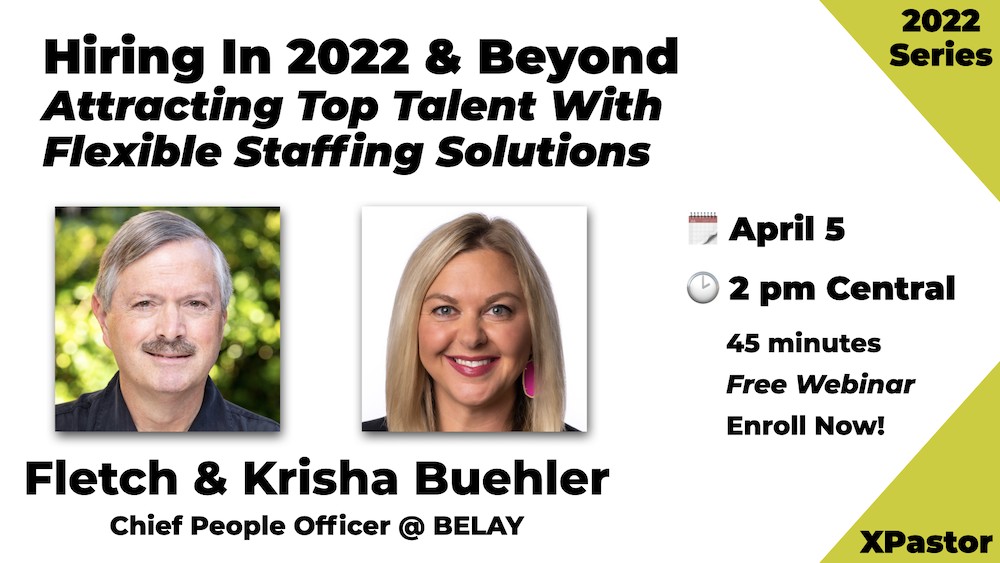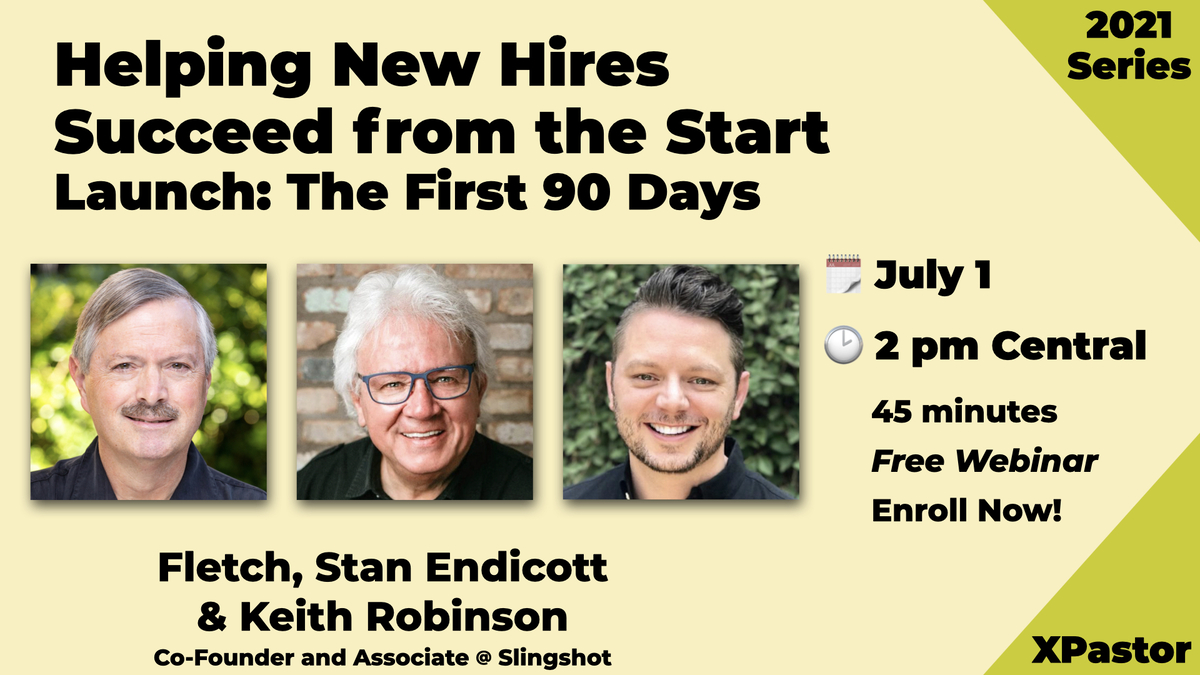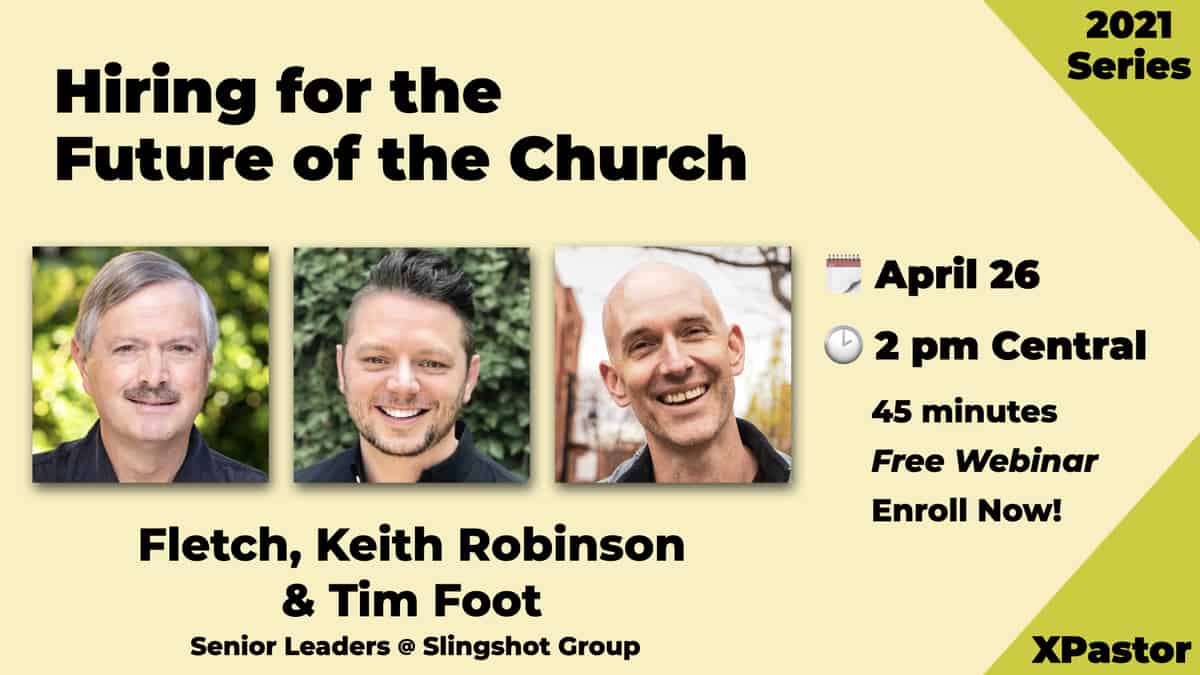The cost of a bad hire could be up to $250,000! That figure is from to the Society of Human Resource Management, an expert HR organization. Say what?!? How can that be? When you consider the salary, the promotion, the time of employees that have to cover the vacant base and the time to hire a new employee—a bad hire is very costly. There’s also a hidden cost to team culture, morale and health.
Juxtapose that cost with the ground gained when there is a great hire. Staff are encouraged, excited and typically their workload is lessened. If you follow the keys to successful hiring, most bad hires can be avoided. Let’s take a look at those keys.
The number one resource that Executive Pastors manage is human resources. Typically at least half of our church budgets go toward staffing. That’s a big commitment and responsibility. Stewarding the lives and the budget properly is critical for success in ministry, relationships, culture and performance. That stewardship starts with a successful hiring process. That hiring process starts with key core hiring and evaluation values.
8 Values for Hiring
I believe there are at least 8 core key hiring values. Over the last twenty years, I have used these values with great success. You will sometimes hear about the 3 C’s of hiring. but I believe you need at least 8 C’s of hiring and staff evaluation.
Christlikeness
The first C is Christlikeness. Many churches will make hires because someone appears to be able to do a great job in the execution of a job but miss really understanding if and how deep the person’s walk is with Jesus. During the hiring process you need to know and understand the person’s faith story and their current walk with and love for Christ. This is discovered in many ways that we’ll discuss in the process below.
Character
The second C is Character. When you’re working in a ministry, after Christlikeness, character is the second most important value for an employee. You need to trust your employees with life stories, potentially donor information, potentially financial information and, most importantly, your employees represent your church or organization. If you want your church or organization to have a stellar reputation for character, then that starts with your staff.
Competency
The third C is Competency. The person can love Jesus and have great character but they also have to be able to do their job well. Finding the right skill set for the right role is vital. There are times that people can evolve or develop into a role’s needed competency if they have the right foundation and teachability. But without competency, there will not be success.
Cultivator
The fourth C is Cultivator. Working in a church is different from any secular job. According to Ephesians 4:11-13, those of us that work in the church have a #1 job of equipping the saints, the volunteers, for the work of the ministry.
Comparisons are made to being immature and that what you are doing is not good (Exodus 20) if we don’t cultivate volunteers and volunteer teams. We need to ensure in the hiring process that someone either has the experience of cultivating volunteers and volunteer teams or has shown that they have the real potential of doing so.
Calling
The fifth C is Calling. I often ask candidates why they want to work at a church? When I get the answer of, I’m not really sure, it certainly gives me pause. Granted these types of unsure answers come typically from support roles, but the need for calling even in those positions is important.
Working at a church is unique. It’s typically less money, typically where you go to church and a place with a primary goal of changing lives—not making dollars. Making sure someone is called to ministry in any role is important and then a calling to your particular church is a key as well.
Culture
The sixth C is Culture. You probably have heard the phrase, culture eats competency for breakfast. It’s true. Often chemistry is one of 3 C’s in a staff evaluation, but I believe culture needs to be its own value. Your potential hire needs to fit your church or organizational culture. How you go about the hiring process will help you make that determination. More to come on that below. The bottom line is, if someone is not a good cultural fit, don’t hire them. You’ll pay for it later.
Chemistry
The seventh C is Chemistry. If you don’t like and don’t connect well with who you’ll be working with, then you shouldn’t hire them. That’s the rule of chemistry. In this day of Zoom, I have found that chemistry can only truly be determined in an in-person meeting. Zoom initial stage interviews are great, but there’s nothing like the real thing, baby, as the song rings in the head.
Capacity
The eighth C is Capacity. The need for capacity in a person needs to match the role. For some roles, balancing many plates, tasks and people is important. For other roles, doing one thing well, or connecting with people well is the predominant responsibility and there isn’t a need for great multitasking. Determine the capacity need before you start your search so that it is something that plays a big factor in your hiring process.
6 Steps in Hiring
Speaking of the hiring process, after you understand your hiring and evaluation values, it is imperative that you have an iron clad process. That process will guide, direct and protect those that you hiring, the candidates, and your entire church or organization to the hiring promised land.
I call our approach the many counselors plan taking the wisdom from Proverbs 15:22 which says, plans fail for lack of counsel, but with many advisors they succeed. Because I believe in a great, tried and true system and process, I rarely deviate from it. That commitment provides consistency and success.
There are six steps in our hiring process. Each step is key to a successful hire.
Initiate
The first step is Initiate. In this initial step, it is critical to get your ducks in a row. What is the goal of the position? Is there a job description? Is there one person that is assigned as the hiring manager for this role? Then there are the particulars of establishing the most likely profile for the candidate, establishing the price point salary range and benefits package, where their work station will be and more.
In this initiate step, one of the key events is what I call a pre-search meeting. What is a pre-search meeting? It’s a 60 minute meeting where the key players for this role are in a room and are discussing, determining, and reviewing the above questions and more. In this meeting, the HR Director (which could be a staff member, senior pastor, executive pastor or an HR lay leader), leads 1 to 3 or 4 people through the details of the role and what the process will be. The overall goal of a pre-search meeting is that the key people are 100% set with job description, hiring plan, etc. before any promotion of the role begins. I have regularly had great candidates apply on the very first day it went public!
Search
The second step is the Search itself. As we search, we need to look in two different ways—reactive and proactive. Here’s what I mean by that. We search for our new staff person by reacting to ads we put out there. We can use the xpastor.org website and many others, such as churchstaffing.com, to put an ad out about our role. The ad should be informative but also contain a little of the church’s personality.
As the names come in, we react to them. Make a commitment to react to each and every name. You can put an auto response on that if it helps with the timing of your reacting. People want to know that their resume was received. Make a commitment to go through this process diligently. I hope that we all move quickly and stay in regular communication with people in the queue. Keep this in mind, to a staff person a week is as a month. But to the candidate, a week is as a day. Don’t dilly dally. Keep the search moving and keep the communication frequent. There’s not much more important in your daily to do’s than the search, when you are in one.
The other way that we search is proactively. Some of the best hires you’ll ever make come from our relationships and network. Make a lot of calls. Tap a lot of shoulders. Do a lot of praying and see who the Lord brings to mind. I was praying on Christmas Eve day, 2022, for a new staff role at our church. We needed a Spanish speaking person for our new Community Center Director role.
Later that day, I was scrolling through Facebook and a staff person from a previous church popped up on my feed. He was at his family’s home in Puerto Rico. I remembered my prayer from earlier in the day and I reached out with a direct message to my friend, Roberto. Long story short, Roberto is now our Community Center Director. Make calls, send texts, send DM’s, tap shoulders, and pray a lot and see what God does in your search.
Screen
The third step in the hiring process is to Screen. I already mentioned one key principle in the screening process and that is to respond quickly. That principle continues throughout the hiring process. After reviewing the resume, I’ll then set-up a Get To Know You interview for those that I don’t cut in the resume screening. This interview is what is often called a resume interview in the Human Resource world. I keep this interview to 20 minutes because I want to get a sense quickly if the foundation is right for the role I am looking for. I always start with the questions:
- So why are we talking?
- What is going on in your life right now that is causing you to look at something different?
- Why are you looking at a church?
I am able to get a ton of information about culture, chemistry, Christlikeness and calling from that last question. There are actually times that I will end the interview after that one question because I can tell the foundation is not there. I’ll be super nice but will address issues and save that person’s time and mine, and then move on. Most of the time I take the full 20 minutes, but there are times that I don’t.
In the Get To Know You 20 minute interview, I’ll also ask for the short version of that person’s faith story. You have to be careful with this one, and I’ll get more from their faith story in the following steps, so setting it up as the three minute version of your faith story is important. In our setting, we have all employees become members, we call them partners, of our church. Because of that, I need to find out if they’re willing to change churches, if they’re local, and if they’ve had a believer’s baptism in their faith tradition and experience. These are foundational questions that will help me and the candidate to know if we should move forward or not.
I also tackle the big picture of finances in that first call. Why do I do this so early? I cover finances this early for two very important reasons. The first is that they want to know. People want to know what the salary range is and the basic benefits package. I don’t practice putting that information in the ad for the role or on our website, but I do practice covering it very early in the process. The second reason is that I value my time and the candidate’s time.
Way too often through the years, before I used this practice, I found myself highly invested and way down the road of the search, only to find out that we were tens of thousands of dollars off on our salary targets and had to part ways with a candidate. That is so frustrating. Covering the topic early I have found to be a win-win. It’s also important to take a couple of minutes to define the dollars.
You may be offering a lower salary but better benefits. That could save a candidate hundreds of dollars a month in out-of-pocket expenses that puts your price point in range. If it’s a ministerial role, you could talk about the benefits of the IRS’s housing allowance. There are a lot of angles to talking about finances, but I have found that covering the big picture up front is a best practice.
Interviews
The fourth step is the in-depth Interviews. I have several possible interview styles that can take place. First, I start with written interview questions. These are five questions about a person’s faith that I ask of all candidates. Then there are an additional four or five questions about the role specifically. After a 20 minute Get To Know You interview, I send these written interview questions for five reasons:
- I see their response time to an assignment.
- I get to see their written communication skills.
- I get to hear more about some basic questions about faith and this role. When I get to face-to-face interviews, I can then go deeper and double click on some of the answers.
- Because I have multiple people in the interview process, they can all read the questions (along with my notes from the Get To Know You interview) and be better prepared for their interviews. Instead of every interview starting with the same basic questions, the written interview questions allow you to go deeper, faster.
- If the answers are not what I am looking for, it gives me another opportunity in the search process to cut a candidate.
Following the written interviews, I’ll move to a face-to-face interview. This could be in-person or it could be Zoom. Ensuring that the interview is face-to-face greatly helps discern fit, chemistry and culture. I’ll never forget years ago, before Zoom, bringing a candidate in for several days of interviewing. I met him in the lobby of our church and almost immediately could tell that the fit, the chemistry and culture, were not there. At that point, I knew it was going to be a long few days of playing out the interview. Now we have the tool of Zoom to help us with that potential problem.
There are several potential types of in-person interviews. There is an in-depth one-on-one with the hiring manager. There could also be key leaders in a leadership interview with the candidate. There is the important team interview with the teammates that they’ll be working with. Proverbs 15:22 says that, plans fail for lack of counsel but with many advisors they succeed. I call our process the many counselors’ plan because I want to get the counsel of those closest to this role in all eight of the C hiring values that we covered earlier.
Offer
The fifth step in the process is the Offer. Here are a few thoughts for consideration. As you approach the offer, too many people will use references and a quick box check to get to the offer. I’ve even heard of some people doing references after the offer has been made and making it a qualifier. Please take references seriously. I believe they need to be voice-to-voice and not in written form.
The reasons are quite simple:
- You need to be able to ask questions based on the answers you receive and,
- People will be more open if their answers are not in writing.
For non-ministerial roles, you do need to adhere to IRS guidelines for references. I won’t take the time to go over those, but a quick Google search will provide you with those guidelines. However, even with those guidelines, you can still ask open-ended questions and allow the reference to open up. I like to ask most of my most important reference questions in the negative.
The reason I do so is that I am the one presenting a challenge and the reference is more likely to open up and give me more information if I’ve introduced the topic. For example, if, during the interview process, we’ve noticed the candidate monopolizes a conversation and talks way too much, I’ll bring that up. I’ll ask the question, it seems that Joe really has a lot to say and maybe doesn’t understand social cues when he’s said too much; would you agree?
I literally will get one of two responses the vast majority of the time. The first response is, now that you mention it … and then they open up more on the topic. The second response is, I don’t know why you picked up on that, that’s not him at all. He must have been nervous. Both responses are super helpful, aren’t they? Again, look at the references as a key part of the offer process.
Another tool that I like to use in the offer process is what I call a preview offer. A preview offer is something I’ll send a day or two before the actual offer. It may be sent while I finish up references or I am waiting on some aspect of the process. I don’t use it every time, but use it as needed as a tool. I will send the anticipated offer but with a big preview across the top so they know it’s not official yet.
I’ll tell them that if the rest of the process goes well, this is what we’re anticipating offering you. This preview offer allows for questions to be asked, dates to be confirmed and any negotiations to take place. That way, when the actual offer is made, those elements are all settled and the result is a voice on the other end of the phone of excitement and anticipation. There are many other aspects of the offer that are important, but we’ll need to save those for another day.
Onboarding
The last step in our six step process is Onboarding. I’ll mention two important aspects of the on-boarding process here. The first is to have a detailed plan. I call ours the 90-90-90 onboarding plan. The first 90 is in reference to the first 90 minutes someone is on the team and walking into your building. We want to roll out the red carpet, have all of our ducks in order and let them know they are wanted, needed and that we are super excited to have them on the team. We have a welcome gift basket ready, we have their work station decked out and we have a plan to give them for that day including key meetings, introductions and trainings. The second 90 refers to the first 90 hours.
Assuming a 45-hour work week for full-time employees, it’s basically having a plan for them for the first two weeks. We want key meetings to be set-up for them, important trainings to be in the calendar and even vital one-on-one relationships established through meetings, coffees. etc. Basically plan out about 50-75% of the new employee’s schedule for the first 90 hours or two weeks.
The last 90 references the first 90 days. When new presidents step into the Oval Office, everyone is looking at their first 100 days to see what type of presidency we’re going to have. I call it the presidential principle. Now we’re not going to encourage or allow any executive orders most likely, but we do want to encourage our new employee to establish the kind of ministry and co-worker they are going to be. That comes through in relationship building, hearing from current employees and key leaders to establish themselves as a collaborative leader, and other key character and value decisions.
Conclusion
Before I close, let me share a word about using search firms. I am a big believer in search firms and believe that there are several good ones out there. I am friends with some of the key leaders of a couple of them and have used and continue to use search firms as needed. Several thoughts to consider. Search firms don’t supplant your hiring process, they supplement it. Don’t think a search firm will solve all of your search process issues. They will give you great guidance, great leads and great vetting.
It will then be up to you and your team to executive the rest of the process—much of which we outlined here. Second, turn to a search firm after you’ve exhausted your in-house candidates. Is there someone in another role that could switch seats, is there an intern or resident ready to step up, is there a lay leader that could change careers to ministry? Third, use a search firm if you need new names or are in a busy season and need an expert team to do the initial heavy search lifting. Once you’ve thought through these key ideas, you are ready to hire a search firm and, based on my experience, you will be glad you did.
Hiring is a lot of responsibility. It’s a science and an art and it can be a lot of fun. Having key values and process to guide you are important keys to successful hires time and time again. Enjoy the process and the great staff you hire as the fruit of your labor!



